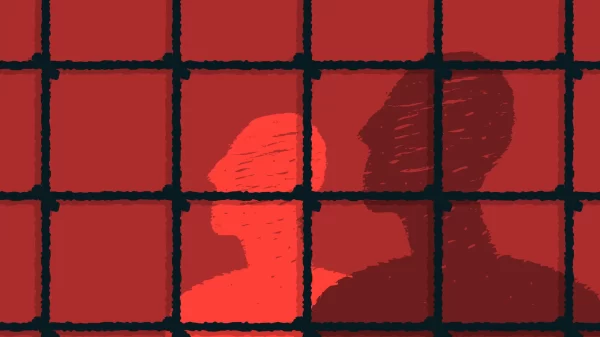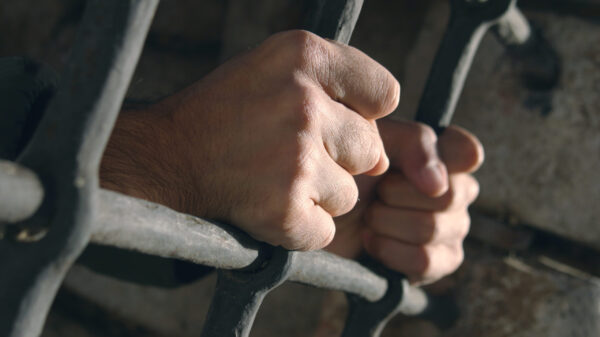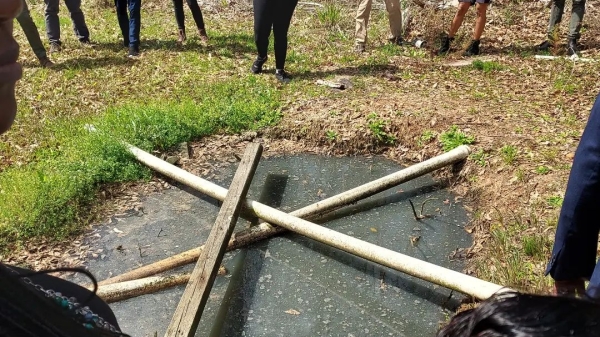By Bill Britt
Alabama Political Reporter
MONTGOMERY—A year ago last week, the Alabama Department of Corrections’ Commissioner Kim Thomas stood before a group of journalists, legislators, government officials and concerned citizens to release the findings from a study by the National Institute of Corrections, (NIC) into conditions at the Julia Tutwiler Prison for Women in Wetumpka.
Commissioner Thomas had requested the study after accusations were made by the Equal Justice Initiative (EJI), in what it alleged were, “frequent and severe officer-on-inmate sexual violence.”
One month after the EJI had filed a complaint with the U.S. Justice Department, Thomas requested the exhaustive study be undertaken by NIC.
NIC is an agency within the U.S. Department of Justice, Federal Bureau of Prisons that, “provide[s] training, technical assistance, information services, and policy/program development assistance to federal, state, and local corrections agencies.”
Thomas, along with Governor Robert Bentley, pledged at the time of the EJI, that the administration would not cover-up or whitewash any finding at the women’s prison.
The Governor also promised to do what was necessary to ensure the safety of the inmates and staff at the women’s facility.
NIC conducted its investigation on the conditions at Tutiwiler and issued a report to the ALDOC in November 2012. NIC made a recommendation of 58 action items for the ALDOC.
According to Thomas, “To date, 57 of those directives have been completed.”
None of these action items were taken into consideration in the DOJ damning report. This is because the DOJ conducted their four-day inspection of Tutwiler before the action plan was concluded by NIC an agency under their auspice.
“In January 2013, before the DOJ ever expressed an interest in investigating Tutwiler, I directed that an action plan be created detailing what we would do to change Tutwiler and make it safer for the women residing there,” said Thomas.
The Justice Department said in their report, “For nearly two decades, Tutwiler staff have harmed women in their care with impunity by sexually abusing and sexually harassing them.”
The report makes it appear that for over 20 years nothing has been done to address the problems at the woman’s facility.
This statement by the DOJ ignores some important history surrounding Tutiwiler.
In the 2002 case LAUBE v. CAMPBELL, great attention was brought to bare on the conditions at Tutiwiler and other women’s prison facilities across the State.
In LAUBE v. CAMPBELL:
“The plaintiffs originally filed this lawsuit in August 2002. Broadly speaking, the court would characterize their allegations as follows: that because of conditions at the three state prison facilities…female inmates are being denied their basic human needs of adequate living space, ventilation, and personal safety and security… female inmates are at a real and substantial risk of injury, prolonged illness, and premature death; and that the defendants have acted with deliberate indifference to the existence of these conditions,” according to a summary of case provided by
“After the hearing on the conditions at the woman’s facilities, Judge Myron H. Thompson, wrote, “In July 2004, at the time of the fairness hearing, the court observed substantial improvements in the conditions at Tutwiler. These improvements are testimony to the work of Warden Deese, and the court has full confidence that, in accordance with the provisions of the settlement agreements, she will build on her notable success.”
That the DOJ would ignore Justice Thompson, 2004, opinion, and not take into consideration the improvements since 2013, casts a suspicious shadow on the Department of Justice’s finding.
DOJ officials conducted their investigation at Tutwiler during a four-day visit in April 2013. At which time they interviewed inmates, staff, and review document and staff polices.
A woman who was an inmate at Tutwiler one year prior to the EJI complaint said that the conditions at Tutwiler were insufferable, but that the sexual activities in the woman’s prison differed little and even less than other facilities in which she had been incarcerated.
A repeat drug offender since the age of 16, Deb as she will be called for her statements said, “The worst part of Tutwiler, was the emotional abuse.” She said there were correctional officers (CO) who really cared, but there were a few that were, “Mean as hell, you were afraid [of them] all the time.” Deb, said in her year a Tutwiler she never witness or even heard rumors of COs raping inmates. She did say that there were woman who did sleep with COs to gain, “lighter duties, or special treatment.”
“You could tell the ones who had something going on with the guards,” they [The CO] would visit them in their bunks, they would flirt, it was disgusting.”
She said, there was “plenty” of consensual and some non-consensual sex involving inmate-on-inmate.
“It’s part of the prison life, for some,” she said.
She said, that the women were treated harshly, “But we weren’t in prison because we were little princesses.”
Of the DOJ report, she agreed with much of it but added, “Women in prison lie, imagine that?”
According to the ALDOC the justice department was granted three days of private interviews with Tutwiler inmates.
In their finding, the DOJ said that, “inappropriate sexual behavior, including sexual abuse, continues, and is grossly underreported.”
However, Thomas said that when the DOJ conducted their interview at Turwiler he asked “to be notified of any current inappropriate staff-inmate relationships discovered.” According to Thomas, the DOJ never informed him or anyone at the department of corrections about any current inappropriate staff-inmate relationships.
Sexuality in prison is a topic not widely discussed in the press or for that matter by society in general. But it would be foolish to imagine humans living in such close conditions without a certain degree of sexual interaction.
A study entitled, “Sex and Sexuality in Women’s Prisons: A Preliminary Typological Investigation,” published in The Prison Journal 2011, takes a clinical look at sexual relation within the prison system. The study explains the three principle forms of sexual violence in female correctional institutions: (a) manipulation, (b) compliance, and (c) coercion…Manipulation occurs when sex is used as a bartering tool. It is a quid pro quo relationship in which sexual favors are exchanged for goods (e.g., drugs, cigarettes) and/or services (e.g., special work detail or cell assignment)…Compliance occurs when a female incarcerate reluctantly but obediently participates in a sexual relationship with another convict or correctional worker of some perceived or real standing and/or influence.”
The study says that compliance may, “take place because of fear, a need for safety or protection, or to avoid victimization.”
The authors point out that sexual coercion may range from, “overt pressure to engage in sexual contact, to sexual assault, and even to forcible rape.” Coercion may to perpetrated in a “prisoner-on-prisoner relationship or a correctional officer–on–female incarcerate relationship.”
The DOJ report says that, “staff member, contractor, or volunteers [at Tutwiler]… have coerced prisoners to engage in oral sex…engaged in voyeurism, forcing women to disrobe and watching them while they use the shower and use the toilet. Staff [has] sexually harass women, subjecting them to a daily barrage of sexually explicit verbal abuse.”
Again Thomas says that the changes that have taken place over the last year are not reflected in the DOJ report. As part of the 58-point action plan Thomas says, extensive staff training related to the Prison Rape Elimination Act and gender responsiveness, has occurred and is on-going. The plan to equip Tutwiler with more than 300 security and monitoring cameras is funded and exhaustive training for investigators—in an effort to enhance the prosecution of wrongdoers—has been conducted.
“We have taken significant steps in the last year to improve the safety and living conditions of the women housed at Tutwiler,” said Thomas. He also says he is committed to the continued improvement to all of the State’s correctional facilities.























































